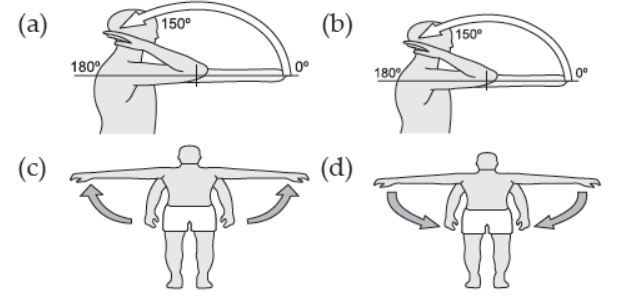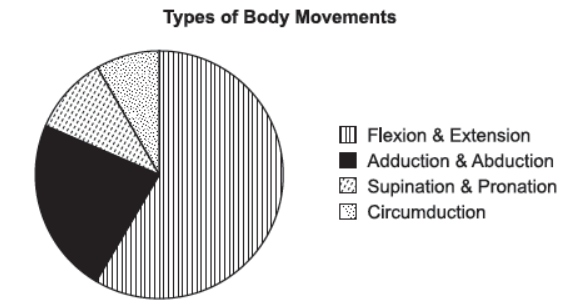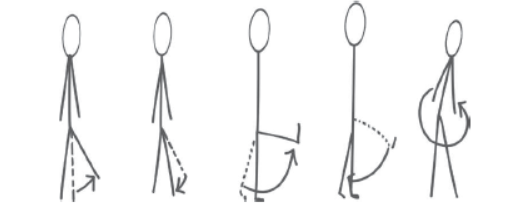Please refer to CBSE Class 12 Physical Education Biomechanics and Sports HOTs. Download HOTS questions and answers for Class 12 Physical Education. Read CBSE Class 12 Physical Education HOTs for Chapter 8 Biomechanics and Sports below and download in pdf. High Order Thinking Skills questions come in exams for Physical Education in Class 12 and if prepared properly can help you to score more marks. You can refer to more chapter wise Class 12 Physical Education HOTS Questions with solutions and also get latest topic wise important study material as per NCERT book for Class 12 Physical Education and all other subjects for free on Studiestoday designed as per latest CBSE, NCERT and KVS syllabus and pattern for Class 12
Chapter 8 Biomechanics and Sports Class 12 Physical Education HOTS
Class 12 Physical Education students should refer to the following high order thinking skills questions with answers for Chapter 8 Biomechanics and Sports in Class 12. These HOTS questions with answers for Class 12 Physical Education will come in exams and help you to score good marks
HOTS Questions Chapter 8 Biomechanics and Sports Class 12 Physical Education with Answers
Question. Acceleration of an object will increase as the net force increases depending on its:
(a) Density
(b) Mass
(c) Shape
(d) Volume
Answer. B
Question. In normal walking at a person’s preferred speed, the ratio of the durations of the stance and swing phases is roughly:
(a) 1-1
(b) 2-3
(c) 2-1
(d) 3-2
Answer. D
Question. In plantar flexion of the foot about the ankle joint:
(a) The foot moves upwards towards the front of the calf
(b) The foot moves upwards towards the rear of the calf
(c) The foot moves sideways
(d) None the above
Answer. B
Question. At touchdown in walking, the knee is normally:
(a) Fully extended
(b) Slightly flexed
(c) Fully flexed
(d) Slightly expended
Answer. B
Question. Flexion and extension are:
(a) Movements in the frontal plane about the sagittal axis
(b) Movements in the sagittal plane about the frontal axis
(c) Movements in the horizontal plane about the vertical axis
(d) None of the above.
Answer. B
Question. Internal and external rotation are movements in which anatomical plane ?
(a) Sagittal
(b) Frontal
(c) Horizontal
(d) None of these
Answer. C
Question. Movements that occur primarily in the sagittal plane are:
(a) Adduction, lateral flexion, flexion, dorsiflexion
(b) Flexion, extension, dorsiflexion, plantar flexion
(c) Flexion, extension, dorsiflexion, internal-external rotation
(d) Supination and pronation of the forearm
Answer. B
Question. Abduction and adduction take place about which axis?
(a) Oblique
(b) Longitudinal or vertical
(c) Frontal or mediolateral
(d) Sagittal or anteroposterior
Answer. D
Question. Flexion and extension are:
(a) Movements in the frontal plane about the sagittal axis
(b) Movements in the sagittal plane about the frontal axis
(c) Movements in the horizontal plane about the vertical axis
(d) None of the above
Answer. B
Question. How do we define the phases into which we often break fundamental movements to simplify biomechanical analysis?
(a) Biomechanically distinct functions and easily identified boundaries
(b) Easily identified functions and clearly defined boundaries
(c) Anatomically distinct functions and easily identified boundaries
(d) Medically distinct functions and clearly defined boundaries
Answer. A
Question. In plantar flexion of the foot about the ankle joint:
(a) The foot moves upwards towards the front of the calf
(b) The foot moves upwards towards the rear of the calf
(c) The foot moves sideways
(d) None of the above
Answer. B
Question. Movements that occur primarily in the sagittal plane are:
(a) Adduction, lateral flexion, flexion, dorsiflexion
(b) Flexion, extension, dorsiflexion, plantar flexion
(c) Flexion, extension, dorsiflexion, internal-external rotation
(d) Supination and pronation of the forearm.
Answer. B
Question. The plane which divides the body into a left and a right is called :
(a) coronal plane
(b) sagittal plane
(c) vertical plane
(d) transverse plane
Answer. B
Question. Sports biomechanics cab be described as :
(a) mechanics of sports
(b) kinesiology
(c) physics of sports
(d) sports dynamics
Answer. C
Question. Newton’s Second Law of Motion is also known as :
(a) Law of Reaction
(b) Law of Inertia
(c) Resultant Force
(d) Law of Effect
Answer. C
Directions: In the context of above two statements,which one of the following is correct?
(a) Both (A) and (R) are true and (R) is the correct explanation of (A).
(b) Both (A) and (R) are true, but (R) is not the correct explanation of (A).
(c) (A) is true, but (R) is false.
(d) (A) is false, but (R) is true.
Question. Assertion (A): Sports biomechanics is a quantitative based study and analysis of professional athletes/sportspersons and sports activities in general.
Reason (R): In simple terms, it may be described as the physics of sports.
Answer. B
Question. Assertion (A): Sports biomechanics is limited to the study those individuals who are involved in exercise or sports or any physical activity.
Reason (R): Performance enhancement is one of the area of the study in sports biomechanics.
Answer. B
Question. Assertion (A): Sportsperson’s performance can be improved by improving her/his technique.
Reason (R): The application of biomechanical principles can be applied to improve technique.
Answer. A
Question. Match List – I with List – II and select the correct answer from the code given below:
LIST-I LIST-II
(i) Abrasion A. Joint Injuries
(ii) Green stick fractures B. Soft tissue injuries
(iii) Shoulder Dislocation C. Cause of sport injuries
(iv) Lack of fitness D. Bone injuries
Choose the correct option from the following:
(a) 1–D, 2–A, 3–C, 4–B
(b) 1–B, 2–A, 3–C, 4–D
(c) 1–B, 2–D, 3–A, 4–C
(d) 1–A, 2–D, 3–B, 4–C.
Answer.
Abrasion Soft tissue injuries
Green stick fractures Bone injuries
Shoulder Dislocation Joint Injuries
Lack of fitness Cause of sport injuries
Question. Identify the human movement and give their names:

Answer.
(a) Flexion
(b) Extension
(c) Abduction
(d) Adduction
Question. Below given are the types of movements in the human body :

On the bases of the above data, answer the following questions:
Question. Which of the following is the most commonly used movement in the human body :
(a) Flexion and Extension
(b) Adduction and Abduction
(c) Supination and Pronation
(d) Circumduction
Answer. A
Question. Which is the least movement in the above mentioned graph:
(a) Supination and Pronation
(b) Circumduction
(c) Adduction and Abduction
(d) Flexion and Extension
Answer. B
Question. Which of the following is the second most used movement in the human body:
(a) Flexion and Extension
(b) Circumduction
(c) Adduction and Abduction
(d) Supination and Pronation
Answer. C
Question. Vishal is about to start a race of 100 meter sprinting.He is ready at the start line, and begins running at the sound of the gunshot and wins the race.
Based on this case answer the following questions:
Question. While at the start line which of the following Newton’s Law works on the body of Vishal:
(a) Law of Gravity
(b) Law of Acceleration
(c) Law of Action Reaction
(d) Law of Inertia
Answer. B
Question. As Vishal sprints on the track which of the following Newton’s Law is applicable:
(a) Law of Acceleration
(b) Law of Action Reaction
(c) Law of Hooke
(d) Law of Ohm
Answer. A
Question. While sprinting Vishal’s leg move back and forth at the hip joint. Which type of movement occurs at the hip joint?
(a) Flexion and Extension
(b) Adduction and Abduction
(c) Dorsi and Planter Flexion
(d) Supination and Pronation
Answer. A
Question. The teachers as well as coaches always make their best efforts to improve the performance of their students in various competitive games and sports. They can help to improve the performance of students if they have adequate knowledge of biomechanics.

Question.The more force one exerts on the downward bounce, the higher the ball bounces into the air.
Which law is this statement being referred to?
(a) Newton’s 1st law
(b) Newton’s 2nd law
(c) Newton’s 3rd law
(d) Law of gravitation
Answer. C
Question. Among the above given pictures, Newton’s 3rd law is depicted in
(a) First
(b) Second
(c) Both
(d) None of these
Answer. C
Question. The acceleration of an object depends directly upon the net force acting upon the object and inversely upon the object’s
(a) Weight
(b) Mass
(c) Height
(d) Density
Answer. B
Question. The study of human body and various forces acting on it is
(a) Biology
(b) Biomechanics
(c) Physiology
(d) Anatomy
Answer. B
Question. A high jumper can jump higher off a solid surface because it opposes his or her body with as much force as he or she is able to generate. This example refers to
(a) Law of conservation
(b) Law of inertia
(c) Law of action & reaction
(d) Law of gravity
Answer. C
Question.. Sohan, a new student in the school was very much interested in taking part in the school sports events. He was taught the latest rules and regulations of football game. In due course, he learnt biomechanical aspects of the game including various movements.

Question. The type of movement in which the angle between joint decreases is called
(a) Flexion
(b) Extension
(c) Gliding
(d) Sliding
Answer. A
Question. Straightening parts of a joint so that the angle increases
(a) Flexion
(b) Extension
(c) Abduction
(d) Adduction
Answer. B
Question. Moving a part away from mid line is
(a) Flexion
(b) Extension
(c) Abduction
(d) Adduction
Answer. C
Question. Moving a part towards the mid line is
(a) Flexion
(b) Extension
(c) Abduction
(d) Adduction
Answer. D
Question. Flexion and extension comes under _________ movement.
(a) Gliding
(b) Angular
(c) Rotation
(d) Circumduction
Answer. B
Question. In biomechanics class, Gopi, the teacher, brings the students to the physics lab of his school. The students get confused. After the completion of the class, they realize the fact.
Question. Why does the teacher bring the students to physics lab for biomechanics class?
(a) It deals with physics principle
(b) Sliding friction
(c) Rolling friction
(d) Static friction
Answer. A
Question. Biomechanics is associated with
(a) Mechanic
(b) Physics
(c) Mechanic and Physics
(d) Mechanic and Anatomy
Answer. D
Question. Friction can be increased by which of the following?
(a) Smooth surface
(b) Dry surface
(c) Decrease the Weight
(d) All of this
Answer. B
| CBSE Class 12 Physical Education Planning in Sports HOTs |
| CBSE Class 12 Physical Education Sports And Nutrition HOTs |
| CBSE Class 12 Physical Education Yoga and Lifestyle HOTs |
| CBSE Class 12 Physical Education Physical Education and Sports for CWSN HOTS |
| CBSE Class 12 Physical Education Children and Women in Sports HOTs |
| CBSE Class 12 Physical Education Test and Measurement in Sports HOTs |
| CBSE Class 12 Physical Education Biomechanics and Sports HOTs |
| CBSE Class 12 Physical Education Psychology and Sports HOTs |
| CBSE Class 12 Physical Education Training and Doping in Sports HOTs |
HOTS for Chapter 8 Biomechanics and Sports Physical Education Class 12
Expert teachers of studiestoday have referred to NCERT book for Class 12 Physical Education to develop the Physical Education Class 12 HOTS. If you download HOTS with answers for the above chapter you will get higher and better marks in Class 12 test and exams in the current year as you will be able to have stronger understanding of all concepts. High Order Thinking Skills questions practice of Physical Education and its study material will help students to have stronger understanding of all concepts and also make them expert on all critical topics. You can easily download and save all HOTS for Class 12 Physical Education also from www.studiestoday.com without paying anything in Pdf format. After solving the questions given in the HOTS which have been developed as per latest course books also refer to the NCERT solutions for Class 12 Physical Education designed by our teachers. We have also provided lot of MCQ questions for Class 12 Physical Education in the HOTS so that you can solve questions relating to all topics given in each chapter. After solving these you should also refer to Class 12 Physical Education MCQ Test for the same chapter
You can download the CBSE HOTS for Class 12 Physical Education Chapter 8 Biomechanics and Sports for latest session from StudiesToday.com
Yes, the HOTS issued by CBSE for Class 12 Physical Education Chapter 8 Biomechanics and Sports have been made available here for latest academic session
HOTS stands for "Higher Order Thinking Skills" in Chapter 8 Biomechanics and Sports Class 12 Physical Education. It refers to questions that require critical thinking, analysis, and application of knowledge
Regular revision of HOTS given on studiestoday for Class 12 subject Physical Education Chapter 8 Biomechanics and Sports can help you to score better marks in exams
Yes, HOTS questions are important for Chapter 8 Biomechanics and Sports Class 12 Physical Education exams as it helps to assess your ability to think critically, apply concepts, and display understanding of the subject.

